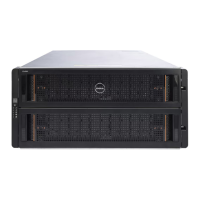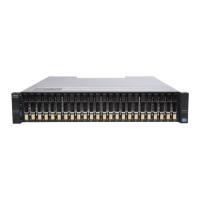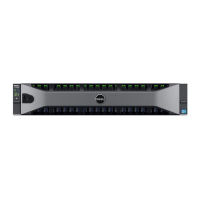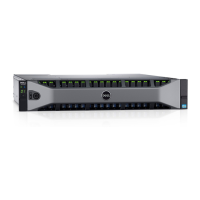Connect the Front-End Cabling
Front-end cabling refers to the connections between the storage system and external devices such as host servers or another Storage
Center.
Dell recommends connecting the storage system to host servers using the most redundant option available. In addition, make sure that the
speed of the HBAs in the storage controller match the speed of the host server.
Topics:
• Types of Redundancy for Front-End Connections
• Connecting to Host Servers with Fibre Channel HBAs
• Connecting to Host Servers with iSCSI HBAs or Network Adapters
• Connecting to Host Servers with SAS HBAs
• Attach Host Servers (Fibre Channel)
• Attach the Host Servers (iSCSI)
• Attach the Host Servers (SAS)
• Connect the Management Ports to the Management Network
Types of Redundancy for Front-End Connections
Front-end redundancy is achieved by eliminating single points of failure that could cause a server to lose connectivity to the Storage
Center.
Depending on how the Storage Center is cabled and congured, the following types of redundancy are available.
Port Redundancy
If a port becomes unavailable because it is disconnected or a hardware failure has occurred, the port moves over to another port in the
same fault domain.
Storage Controller Redundancy
To allow for storage controller redundancy, a front-end port on each storage controller must be connected to the same switch or server.
If a storage controller becomes unavailable, the front-end ports on the oine storage controller move over to the ports (in the same fault
domain) on the available storage controller.
Multipath I/O (MPIO)
MPIO allows a server to use multiple paths for I/O if they are available.
MPIO software oers redundancy at the path level. MPIO typically operates in a round-robin manner by sending packets rst down one
path and then the other. If a path becomes unavailable, MPIO software continues to send packets down the functioning path.
NOTE
: MPIO is operating-system specic, and it loads as a driver on the server or it is part of the server operating system.
3
36 Connect the Front-End Cabling

